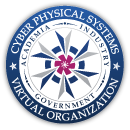Biblio
This contribution provides the implementation of a holistic operational security assessment process for both steady-state security and dynamic stability. The merging of steady-state and dynamic security assessment as a sequential process is presented. A steady-state and dynamic modeling of a VSC-HVDC was performed including curative and stabilizing measures as remedial actions. The assessment process was validated by a case study on a modified version of the Nordic 32 system. Simulation results showed that measure selection based on purely steady-state contingency analysis can lead to loss of stability in time domain. A subsequent selection of measures on the basis of the dynamic security assessment was able to guarantee the operational security for the stationary N-1 scenario as well as the power system stability.



